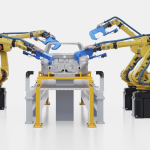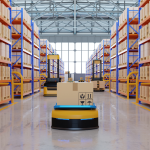The Industrial Internet of Things (IIoT) is evolving beyond automation, becoming a key driver of industrial strategy
Rethinking IIoT: More Than Just Operational Gains
For years, businesses have viewed the Industrial Internet of Things (IIoT) as a way to drive efficiency—reducing downtime, optimizing production, and improving maintenance. But the real value of IIoT isn’t just in automation; it’s in the data it generates. The ability to analyze and act on real-time insights is transforming IIoT from an operational tool into a strategic asset. Companies that embrace this shift will not only improve productivity but gain a competitive edge in resilience, agility, and long-term decision-making.
Viewing IIoT purely as a cost-cutting tool limits its strategic value and prevents businesses from fully capitalizing on its potential. Industry leaders are already using IIoT-driven intelligence to enable new business models, reconfigure supply chains dynamically, and even create entirely new revenue streams. This shift demands a different mindset—one where IIoT isn’t just a tool for optimization but a driver of transformation across supply chains and production ecosystems.
Turning Data Into a Competitive Differentiator
IIoT’s greatest power is its ability to collect, analyze, and operationalize vast amounts of real-time data. Yet, many organizations still struggle to move beyond data collection and use these insights strategically. The challenge isn’t having data—it’s knowing what to do with it. Businesses leading the charge are leveraging IIoT data to predict supply chain disruptions, dynamically adjust production schedules, and even develop predictive pricing models based on real-time demand fluctuations.
A major shift already underway is the move from traditional predictive maintenance to autonomous, self-correcting systems. While predictive maintenance has helped companies reduce unexpected downtime, the next step is AI-driven automation that continuously adapts production and logistics based on real-time conditions. Instead of simply alerting maintenance teams, IIoT-connected machines and logistics networks will autonomously adjust parameters to prevent failures before they happen.
The Playbook for Success
To fully capitalize on IIoT as a strategic asset, companies need to rethink their approach. First, align IIoT initiatives with broader business goals, not just operational KPIs. If IIoT investments aren’t directly supporting supply chain agility, new service models, or revenue diversification, they’re being underutilized.
Second, focus on scalability and integration. Many IIoT projects fail to move beyond isolated pilot programs because they aren’t designed for enterprise-wide deployment. A clear roadmap for scaling IIoT across production sites, supplier networks, and customer-facing operations is essential.
Finally, treat IIoT as a revenue enabler, not just a cost saver. The most forward-thinking organizations are using IIoT to optimize inventory dynamically, provide predictive insights across supplier networks, and even monetize data-driven efficiencies. Companies that embrace IIoT’s strategic potential now will be the ones reshaping the competitive landscape in the years ahead.
The priority is to move beyond isolated IIoT investments and build a roadmap that turns data-driven insights into concrete competitive advantages. This means defining clear objectives, ensuring seamless integration with existing systems, and equipping teams with the right skills to extract value from real-time data. Those who take a structured approach now will position their companies for sustained success in an increasingly digital and automated industry.







